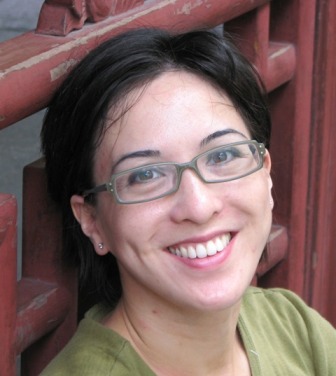I’m starting to really panic about moving. I wake up in the middle of the night, remembering the toughest moments of the adjustment to life in Seoul and blowing them up into imaginary future catastrophes.
Anyway, my husband has been studying a kind of breathing technique called “Seokmun Breathing Meditation” (석문호흡) for about eighteen months now. He started, not because of some deep interest in breathing or in the idea of storing and moving his qi, but because he noticed that after a heavy night of drinking the only person who could get up for a early round of golf (besides him) was a guy who does SeokMoon breathing. K is already a pretty strong, healthy person, but we both noticed a difference within six months or so: he seemed to have a healthy glow, his skin looks great, he sleeps really well, he’s able to handle stress better, and he feels healthier. Despite all that the party pooper in me resisted joining. But with less than two months left and the insomnia becoming increasingly debilitating I thought, What the hell.
I don’t have time (or the inclination at this moment) to write anything long, serious, or detailed about this school of breathing; what follows are just my notes and impressions from the first week.
There are fifteen stages to Seokmun Breathing Meditation. The first stage is called Wa-sik Su-ryeon (와식 수련) and involves learning how to breathe in a prone posture in order to create a Dan-jeon (단전), which, the book explains, is like a pitcher that holds qi. The Dan-jeon created in this stage is located about two finger widths below one’s belly button (but inside the body). After a series of warm-up exercises (stretching and kicking) we go through a series of eleven positions, called Haeng-gong (행공), for two minutes each. Some are easy; the first involves lying on the floor, arms at a 45-degree angle and palms up, legs no more than a shoulder width apart. Some are hard. The hardest one for me is number 8, pictured above. I can hold it for about a minute now and that’s taken a week or so. After Haeng-gong we lie in the first position for quite a long time and breathe. Many people fall asleep (though I have not yet). After than we do Hoe-geon-sul (회건술) which are sort of recovery exercises.
While doing each Haeng-gong position we’re supposed to focus on that spot below the belly button and imagine qi flowing like water towards that spot. We’re also supposed to focus on the breathing. The master says to relax the body and the consciousness; the body I can deal with but the consciousness part I find very difficult.
The first day the master evaluated my qi and put a small patch on the area where the Dan-jeon is supposed to be. He told me my qi is strong but very disorganized, which sounds about right. When I’m lying there trying to relax my thoughts are running a mile a minute, helter skelter, in all directions. I’m thinking about things I need to do, people I need to call or email. I’m calculating how much more time I need to hold the position. I’m timing the rest of my day, wondering if I should take the bus or a tax to my next destination. I’m trying to figure out what I’m going to write in this post and the other posts I’ve been working on. I’m thinking about what to have for lunch. I’m wondering how long it will take for my skin to look better. I also catch myself wanting to outperform the others in the class and impress the instructor. Every few seconds I try to place my focus back on the Dan-jeon but then I start thinking about how weird it is to try to focus on a part of the body that I can’t feel. When I do focus on that spot, it feels like I’m sensing the body from the outside, not the inside. I have a mental picture of where it is but it doesn’t really correspond to the physical reality. Even my legs — a part of the body I’m more familiar with — are hard to feel when they are completely relaxed and not in pain. Without the sensory stimulation they become invisible to my consciousness.
I realized at one point that even though I’m not a particularly verbal person my thoughts are very verbal. I talk to myself a lot, automatically evaluating and analyzing things as if I’m going to write a blog post about them. I wonder if I was like that before blogging. It was too hard to replace the worded thoughts with a focus on some physical area which I cannot really perceive so I started repeating nonsense syllables (“om”) to shut out the mental chatter. That has helped.
So far all I can really say is this: I have been sleeping better. I still sometimes wake up in the middle of the night but it is easier for me to push the panicky thoughts away. Perhaps somewhere down the line I’ll have more insight into the ways in which this practice affects my sense of the body, of consciousness, and of the relationships between mental and physical health, but for now being able to get a little more sleep is enough.




No comments:
Post a Comment